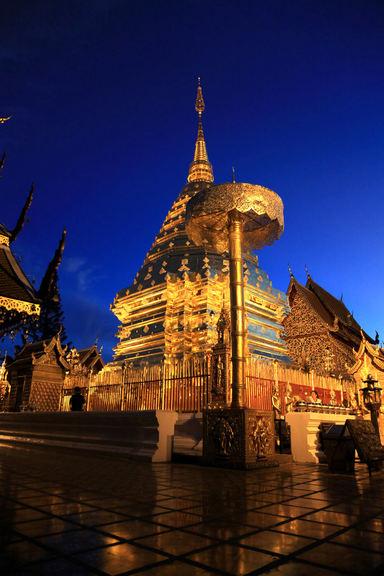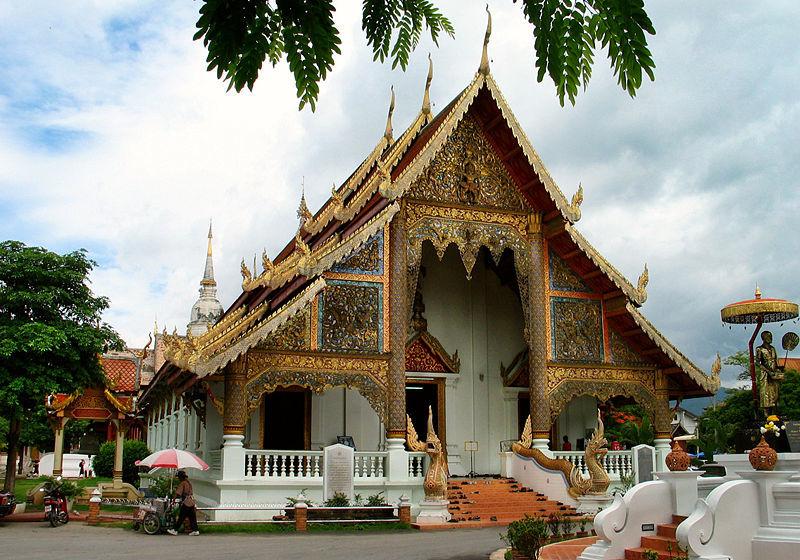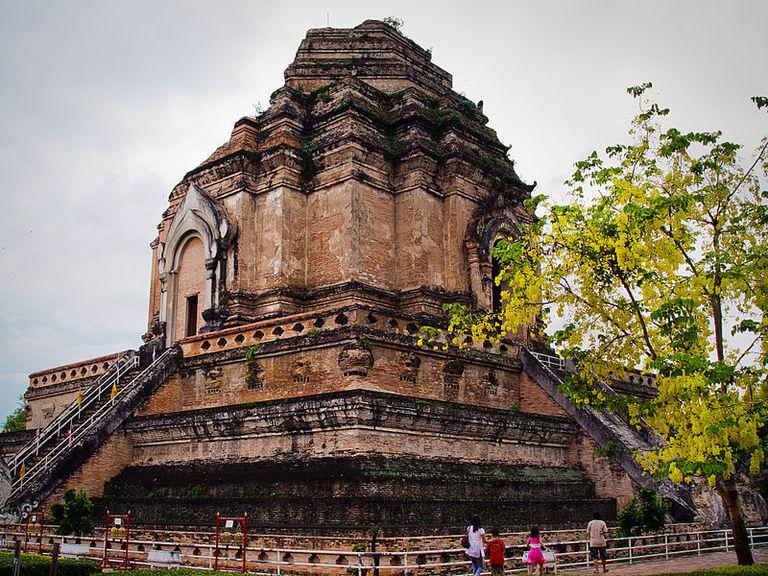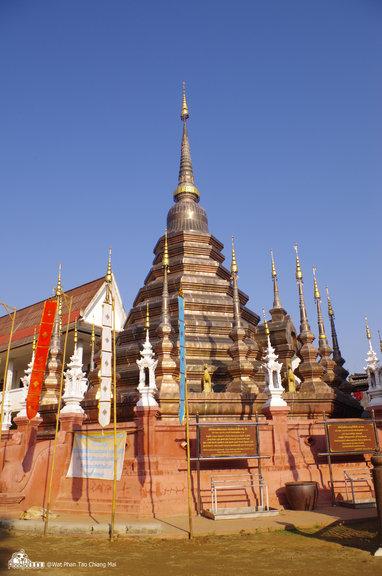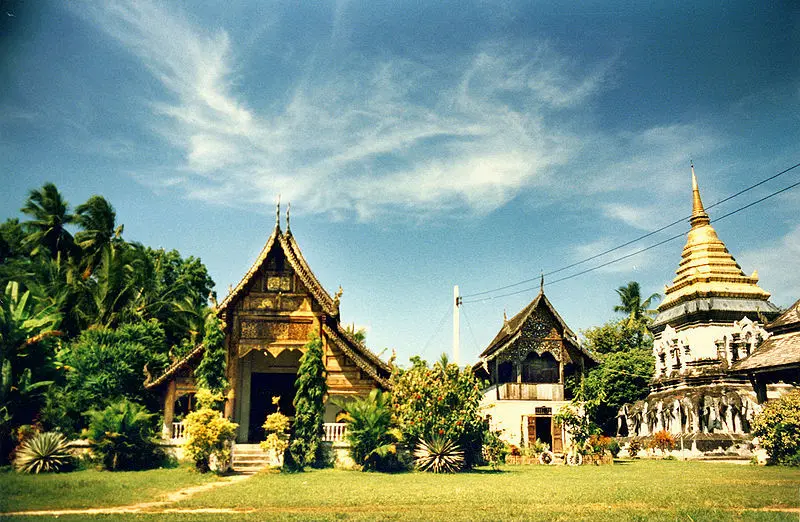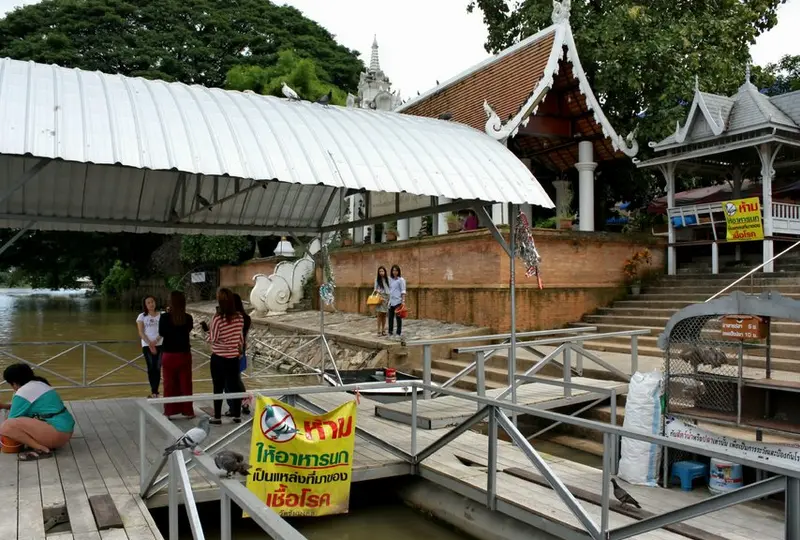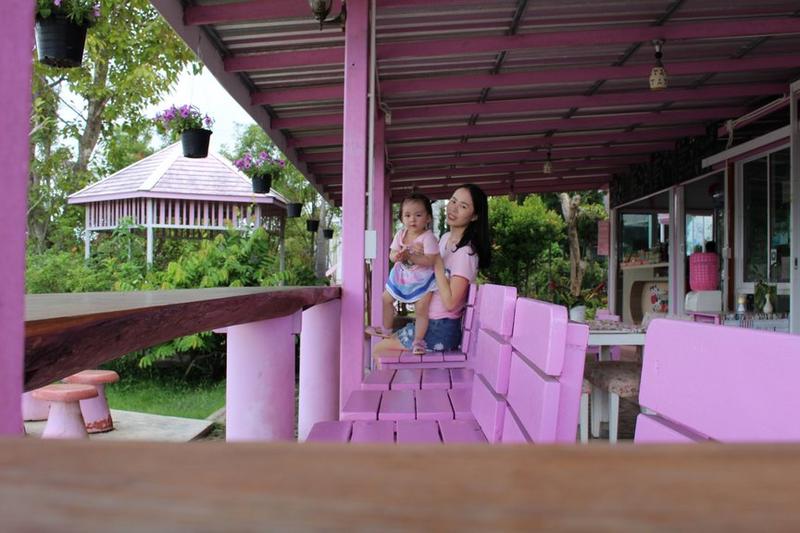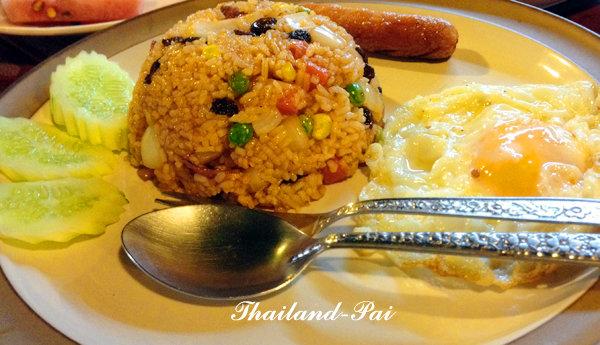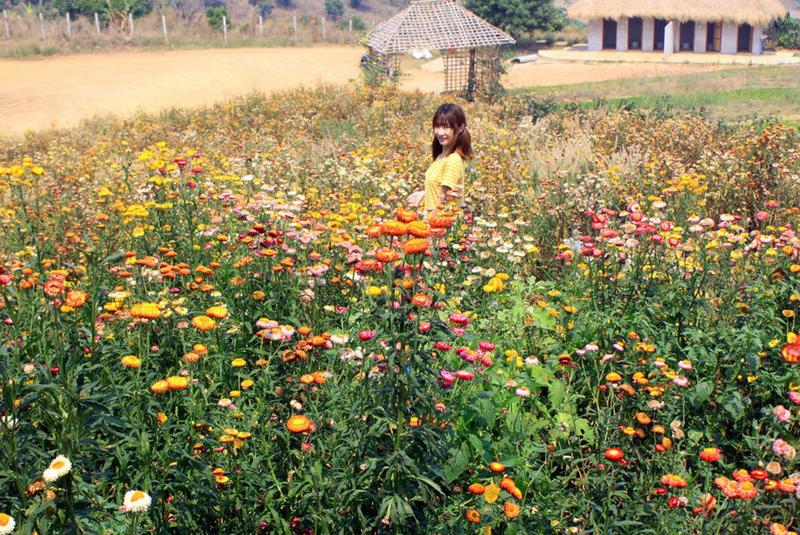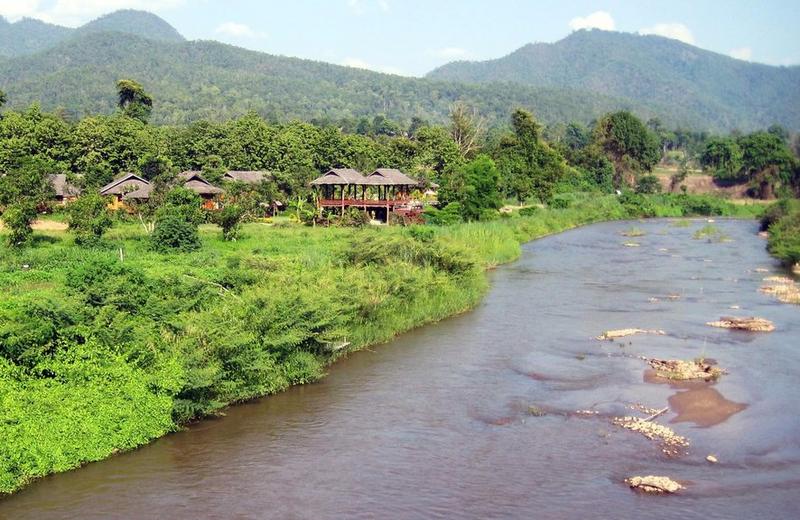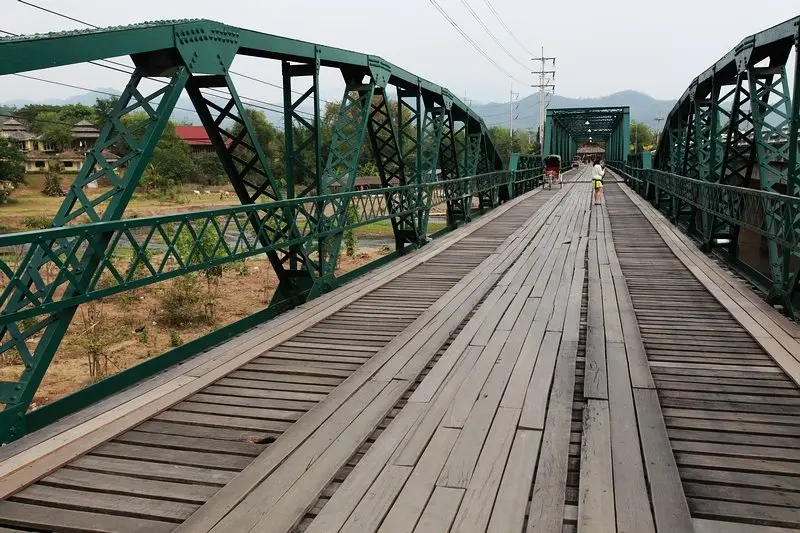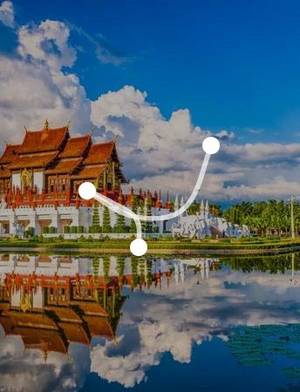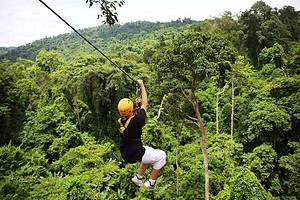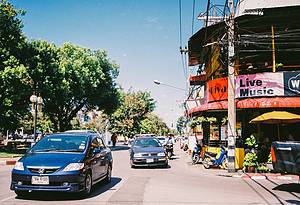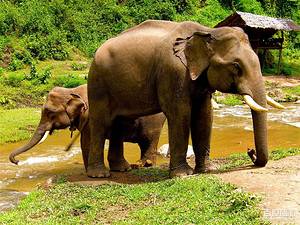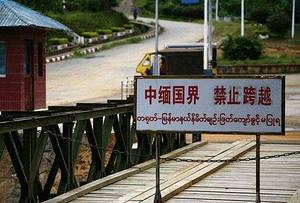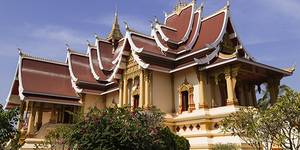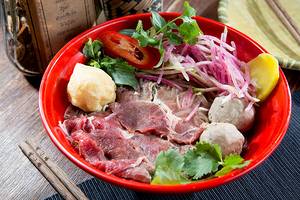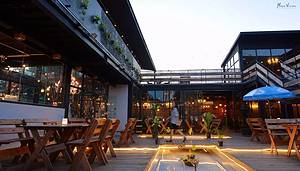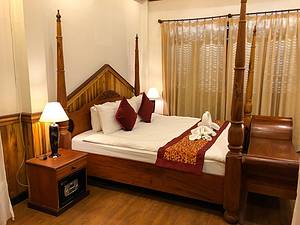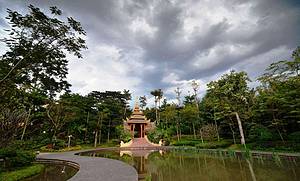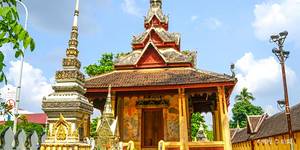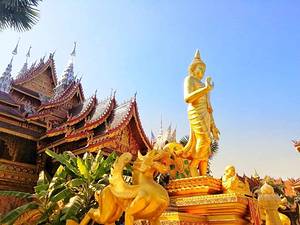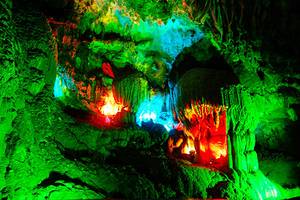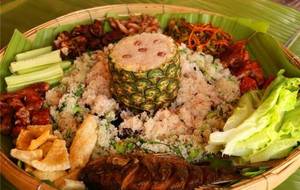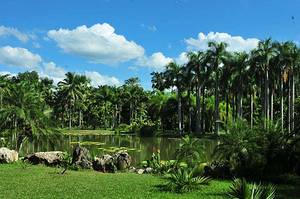Chiang Mai - Pai 4-day Fresh and Charming Trip
2 cities |
22 attraction(s) |
total distance 55
km
 TIPS
TIPS
Day1
Day2
Day3
Day4
Day1: Chiang Mai
5 attraction(s) ·
26 km
1
Doi Suthep is located 16 kilometers west of Chiang Mai, with an elevation of 1667 meters. The top of the mountain offers stunning views of Chiang Mai city. A 300-step staircase leads to the observation deck, making it a natural lookout point. The temple on Doi Suthep, known as Wat Phrathat Doi Suthep, was built in 1383 and houses a golden stupa containing the relics of the Buddha. The temple is also known as the "Temple of the Double Dragon" due to the two dragon statues on the staircase. The mountain is considered a sacred place by locals and offers panoramic views of Chiang Mai and its surroundings.
6
km
2
Phu Ping Ratchaniwet Palace is the royal palace and summer residence of the Thai royal family, completed in 1962. It is a Thai-style architecture with lush gardens and beautiful flowers. The palace is located on the Suthep Mountain and offers a cool and serene atmosphere. It is a popular destination for tourists and a great place to escape the summer heat. The palace can be visited along with the nearby Doi Suthep Temple. The entrance fee is 50 THB for foreigners and 20 THB for locals. The palace is open from 8:30 am to 4:00 pm on weekends and public holidays. The garden is open daily from 8:30 am to 4:15 pm.
5
km
3
Doi Suthep is a 1676-meter high mountain named after the hermit Sudeva who lived there for many years. It is a popular tourist destination with dense forests. The mountain slopes are covered with colorful roses, and the mountaintop is surrounded by white clouds, offering beautiful scenery. The viewpoint at the top, reached by climbing 300 steps, offers a panoramic view of Chiang Mai city and is a natural lookout point. The mountain is also known as "Yuxian Mountain" or "Huixian Mountain" by the local Chinese. Doi Suthep National Park was established in 1981, and there are several temples nearby. If you visit Chiang Mai, be sure to visit Doi Suthep to overlook the city. It is also popular among birdwatchers and hikers.
13
km
4
Chiang Mai University, founded in 1964, is the first institution of higher learning in Northern Thailand and the first national university in Chiang Mai. It is currently ranked second in Thailand and covers an area of 14 square kilometers. The university has 107 faculties, with over 18,000 students and more than 2,000 teachers. While Chiang Mai University's overall academic level may not be comparable to some renowned universities in Bangkok, its engineering and medical technology programs are outstanding, earning the university a reputation. The campus is located 2 kilometers west of the city center, very close to Doi Suthep Mountain.
3
km
5
Chiang Mai's smallest commercial area, art district. It's not only a great place for shopping, but also home to many unique cafes and galleries.
Day2: Chiang Mai
7 attraction(s) ·
8 km
1
Phra Singh Temple was first built in 1345 as a memorial to Pa Yo's father. It is the largest temple in the ancient city of Chiang Mai and attracts the most visitors. The temple is famous for its statue of Phra Singh. It is one of the highest and largest temples in Chiang Mai, alongside Wat Chedi Luang. The temple was initially built by King Mangrai in 1345 and has been expanded multiple times. It houses the ashes of King Kawila and features a gold-plated hall with exquisite wood carvings. There are also murals depicting the daily life of Chiang Mai residents and the temple in the 19th century. The temple is named after the revered gold-plated Phra Singh Buddha image. There are also similar Buddha images in Bangkok and Lopburi, said to be made in Sri Lanka. The temple also houses a collection of beautifully crafted manuscripts. The Bai Lai Pavilion is located in the corner of the temple, featuring white walls and a golden wooden door. Inside, there are murals depicting traditional clothing and customs of the region, representing traditional art of northern Thailand. The library inside the temple holds many classic works, and the walls are decorated with statues of goddesses in the "wai" (respectful gesture) pose. There are two white mythical creatures at the entrance. The temple is brightly lit and adorned with traditional music performances. The main hall has a more understated ivory-white color scheme. The outer walls of the temple feature large advertisements related to Buddhism. Opposite the temple is Wat Pha Bong.
1
km
2
Located at the southern end of Phra Pokklao Road in the old city of Chiang Mai. It is famous for its visually stunning Great Buddha Stupa, which was built in 1411. It is one of the most famous of the six major temples in Chiang Mai and is considered one of the most revered temples in Chiang Mai alongside Wat Phra Singh. The entrance is adorned with snake and peacock decorations, and there is a huge Buddha statue inside. Behind the main hall is a magnificent square Great Buddha Stupa, which was first built in 1411 and has been expanded several times since then, reaching a height of 90 meters. In 1545, a major earthquake struck Chiang Mai, causing the pointed top of the Great Buddha Stupa to collapse overnight, revealing the golden Buddha statue inside. Despite being destroyed by the earthquake, it remains the most magnificent building in Chiang Mai.
1
km
3
The meaning of Phan Tao is "1000 furnaces" because it used to be a foundry for casting Buddha images for important temples. Wat Chedi Luang, located north of Phan Tao Temple, preserves a huge and ancient teak wood Buddha pavilion from the Lanna era. The temple is small but ancient, with dark tones and unique features. The main hall is made of teak wood and surrounded by bamboo pagodas adorned with small yellow flags. The courtyard has an artificial canal with a sandy area and a tree with a Buddha statue underneath, depicting the scene of the Buddha attaining enlightenment under the Bodhi tree. The walls of the hall display many photos of the temple's celebration activities, with candles arranged in various patterns such as following the curves of the canal or radiating from the central Buddha image. In a few days, there will be an event, and today the monks are cleaning the canal, which is actually a cement trough, by draining the water and scrubbing the walls and bottom. There is also a bamboo pagoda without flags and a dazzling white pagoda behind.
2
km
4
Also known as Wat Chiang Man, it is the oldest temple in Chiang Mai. It was originally a palace and residence of the king and was converted into a temple in 1926. The main hall features distinctive Lanna-style architecture and two famous precious Buddha statues. The temple also has a square chedi decorated with elephant carvings, surrounded by 15 elephants. The temple is highly regarded for its exquisite decorations and beautiful courtyard. There are also monks and freely roaming cats and dogs in the temple.
1
km
5
The East Gate of Chiang Mai's Old City is the starting point of the Night Bazaar and a landmark that is easy to find. It's a great place to experience the local culture and interact with locals. Visit the Warorot Market to engage in small-scale trading and truly experience life in northern Thailand.
3
km
6
Tha Phae Gate is in the eastern part of Chiang Mai, also known as the new city. It has many shops and everything you need.
3
km
7
The Mae Ping River is the source of the Chao Phraya River, also known as the "Mother River" of Thailand. It originates from the mountains in the northern part of Chiang Mai, passes through the city center, flows through the northern plateau, and finally merges into the sea in Bangkok. Along the Mae Ping River, there are many unique coffee shops and pastry shops. Sitting in a comfortable shop by the river, enjoying delicious food while admiring the beautiful scenery, is an excellent way to experience the leisurely lifestyle of Chiang Mai.
Day3: Pai
5 attraction(s) ·
8 km
2
The Pink House is called Pai Waan in English. It is actually a Hello Kitty themed hotel, with pink everywhere. Its iconic building is a pink jeep, perfect for girls with a dreamy and girly heart.
2
km
3
The Heart of Pai is a unique upside-down hut located within The Heart of Pai Resort in Pai County. It is a man-made landscape and not intended for accommodation, but its distinctive design makes it one of the must-visit landmarks in Pai County.
3
km
4
This is a temple located near the main road in Bai County. It is situated on the hilltop and provides an excellent viewpoint for watching the sunset, as well as overlooking Bai County.
3
km
5
Pai's night market is lovely. There are many cheap and delicate things. There are many delicious options, such as BBQ, pizza, mango rice, and beverages served in bamboo cups. You may also encounter Blue Boy's performance art and Captain Jack's smoky makeup at the night market.
Day4: Pai
5 attraction(s) ·
15 km
1
The Cloud View Pavilion is the best place to overlook the panoramic view of Baixian County and is famous for its sunrise. There are countless tourists coming here every day to enjoy the beautiful sunrise. The road to the viewing platform is steep, but there is a flat area once you get up there.
12
km
2
A small strawberry plantation located between Coffee in Love and Pai Canyon. Outside, there are large strawberry sculptures, flower carts, heart-shaped gates, message cards, etc. On the top of the slope, there is an open space where you can overlook the entire strawberry field and the mountain scenery behind it. Various sizes of strawberry models are scattered among them, plus the backdrop of "Strawberry, Love Pai", making it the most popular photography spot.
1
km
3
The Pai Canyon is located between Pai and Chiang Mai, 8 kilometers away from Pai. Visitors can climb up the observation deck along the stairs to overlook the cliffs and the Pai Canyon. The canyon can be reached via a dirt road, but there is no shade on the way, so it is best to visit in the early morning or evening.
2
km
4
A natural park with a beautiful river called Baihe, offering breathtaking and pleasant scenery for relaxation.
1
km
5
Bai County Memorial Bridge may appear abandoned at first glance, but in fact, thousands of Thai tourists visit here every year during the peak tourist season. It is one of the most important bends in the "Bai County 762 curves" and a highly popular photo spot. Located 9 kilometers away from Bai County, the bridge was built by Japanese soldiers during World War II.
